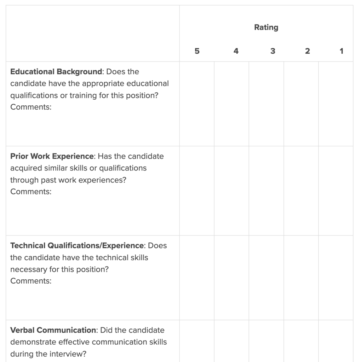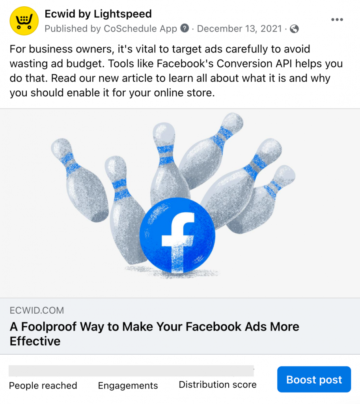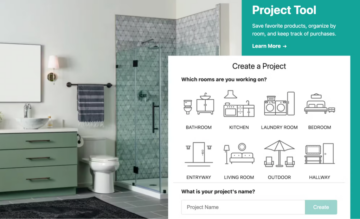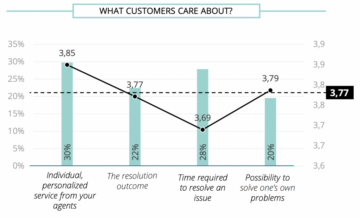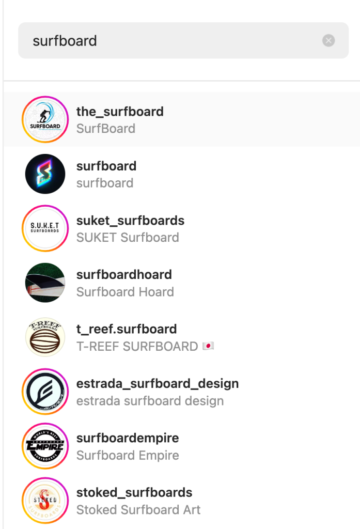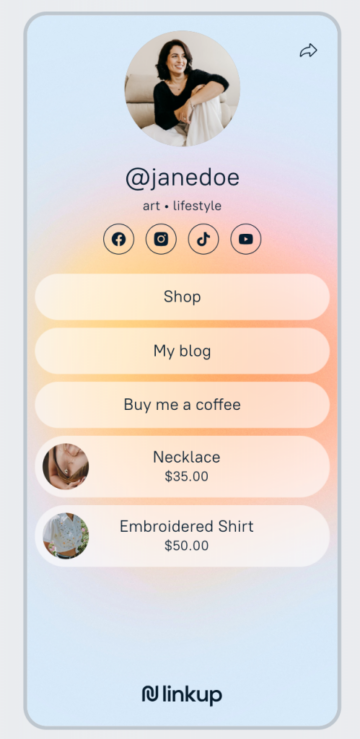In the digital age, with so many market choices available, even the most robust marketing campaigns can get lost. But one voice really stands out: your customers’.
Reviews and testimonials have become the pillars of brand perception and purchase decisions, especially in the realm of ecommerce. Harnessing this power is not just about showcasing past successes; it’s about amplifying a persuasive authenticity that speaks to the hearts and minds of potential buyers.
Discover why customer testimonials are your ecommerce superpower and how to leverage them to drive conversions, loyalty, and brand credibility.
What Are Testimonials?
Customer testimonials are reviews or feedback from satisfied customers highlighting their positive experience with a product, service, or brand. They can be in the form of written statements, video recordings, social media posts, or ratings on review platforms.
Types of Customer Testimonials
There are several types of customer testimonials that you can leverage for your ecommerce business:
- Text-based testimonials: These are written statements from customers highlighting their positive experience with your brand.
- Video testimonials: These are recorded videos of satisfied customers talking about their experience with your brand.
- Social media testimonials: These are posts or comments on social media platforms, such as Instagram or TikTok, from customers who have had a positive experience with your brand.
- Influencer testimonials: These are endorsements from influencers or celebrities who have used and loved your products/services.
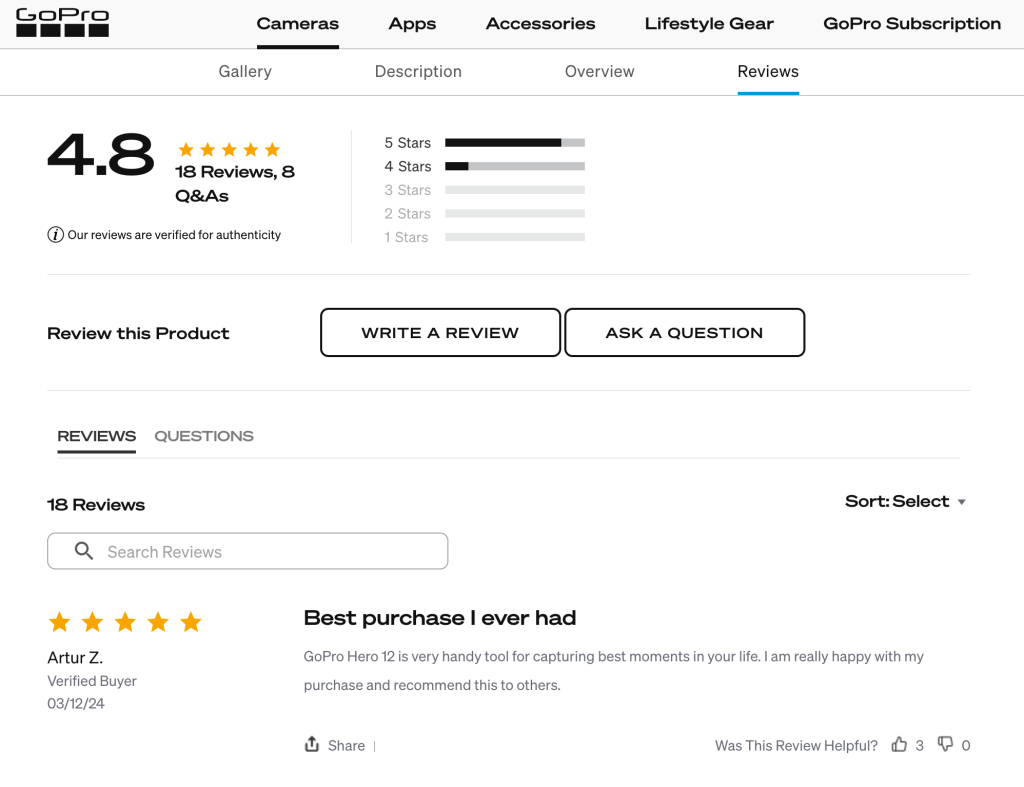
Customer testimonials are typically displayed on a website home page and product pages
Why Are Testimonials Important for Ecommerce?
Before we share how to gather and display customer testimonials, it’s crucial to understand why they are so potent.
The Power of Social Proof
Customer testimonials serve as a form of social proof. In other words, they provide evidence that others have had a positive experience with your product or service. This type of validation is crucial in building trust with potential customers, especially in ecommerce, where physical interactions between buyers and sellers are limited.
The Psychology of Persuasion
The psychology behind testimonials and reviews is simple yet compelling: humans are inherently social creatures, and as such, we are heavily influenced by social proof.
When we see others making choices and being vocal about their experiences, our brains naturally incline toward that same option. But it goes even deeper. We’re hardwired to seek validation from others. Testimonials offer precisely that — a form of validation that your product or service is worth the customer’s time and money.

Frequency of reading online reviews of local businesses in the US (Source: Statista)
Trust and Credibility — Not Just Buzzwords
Every business owner knows the importance of trust and credibility, yet these attributes truly hold substance when experienced and verified by others.
Testimonials are a way to humanize your brand, injecting real stories and faces into what might otherwise be a faceless online transaction.
Transparently sharing your customers’ experiences — positive or negative — builds credibility, empathy, and connection, the cornerstones of enduring customer relationships.
How to Use Testimonials in Your Marketing Strategy
Now that we’ve established the power of customer testimonials, it’s time to delve into how you can effectively incorporate them into your marketing strategy.
Gather Testimonials Regularly
Make sure to gather testimonials from your customers regularly. This can be done through post-purchase surveys, email requests, or even social media shoutouts. It’s essential to have a steady stream of fresh testimonials to showcase on your website and social media platforms.
Check out the article below for an overview of collecting customer testimonials via email, interviews, and customer feedback software.
Ecwid sellers can automate the collection of customer testimonials via email or various apps. This way, you can regularly gather reviews without much effort.
Use Testimonials Throughout Your Website
Don’t limit testimonials to a designated testimonials page. Incorporate them throughout your website, especially on product pages where they can serve as powerful sales tools for potential customers.
Testimonials proudly displayed on your site’s homepage, product pages, and checkout process can nudge the wavering customer to the confirm purchase button.
If you created your ecommerce website with Ecwid, you can easily add testimonials to your site using pre-made design blocks. There are several layouts and styles to choose from, making it easy to display customer reviews in an attractive manner.

You can choose from different layouts for your Customer Reviews section
Place Testimonials Strategically
Strategically positioning testimonials, such as aligning them with related products or accentuating them with visuals, guarantees they capture attention effectively.

Baking Steel showcases customer testimonials through pop-ups across various site pages
Additionally, consider using testimonials that mention specific product features or benefits you want to highlight. This can help potential customers understand the value of your products and services more clearly.
Leverage Testimonials in Your Social Media Strategy
Social media platforms offer a great opportunity to showcase customer testimonials. Share screenshots of positive reviews or re-post influencer endorsements on your brand’s social media handles. You can even create a dedicated hashtag for customers to share their experiences and feature those testimonials on your social media feed.

Calvin Klein customers showcase their purchases by sharing hundreds of thousands of images using the brand’s hashtag
Add Testimonials to Newsletters and Email Campaigns
If you send newsletters or email campaigns to your customer base, consider featuring testimonials. This not only adds credibility to your brand but also serves as a reminder for happy customers to share their experiences with others.
Be smart with testimonial placement. For example, you can add them to abandoned cart emails to remind potential customers of the positive experiences others have had with your products.

To’ak Chocolate adds a link to their customer testimonials in abandoned cart emails and newsletters
Adding testimonials to non-promotional newsletters like industry news or tips can also be a subtle yet effective way to showcase social proof. For example, if you own a hair care brand and regularly send out newsletters with hair care tips, you can add a testimonial from a satisfied customer at the end of the email.
How to Get Customer Testimonials
Great, heartfelt testimonials don’t just land in your lap; they require a strategic approach to gathering and curation that respects your customer’s time and effort while making the review process seamless. Consider:
Making It Easy for Your Customers
A hassle-free, enjoyable customer experience doesn’t end at the sale. You want the process of leaving a review to be as convenient as possible. Tools like post-purchase emails with direct review links or in-line forms on your website expedite the process and show that you value your customers’ feedback.
If you’d like to automate the process of collecting and displaying customer testimonials, check out our list of top 10 customer reviews and testimonials tools.
Incentivizing Without Coercion
Incentives can motivate customers to leave a review, but be careful not to cross the line into coercion. The goal is to reward and thank your customers, not to buy their opinions. Keep the value of the incentive modest and focus on appreciating their willingness to share their story.

An automated customer testimonial request in an Ecwid store
How to Ask Customers for Testimonials to Get a Perfect One
Let’s compare two testimonials:
Generic testimonial: I love this product!
Specific testimonial: This product has completely transformed my daily routine. I struggled with dry skin, but since using this product, my skin has become softer and more hydrated than ever before.
Generic reviews might be nice, but they don’t have much impact on your brand. Here’s how to ask for testimonials that are specific and impactful:
Reach Out to Your Most Loyal Customers
Your most loyal customers are the ones who have the most positive experiences with your brand. Reach out to them personally and ask for a testimonial. Not only will they be more likely to provide one, but their words will also carry more weight with potential customers.
Pro Tip: Identify your most loyal customers using the Customers page in Ecwid. Just filter customers by order count or total order value.

Filtering the most loyal customers in an Ecwid store
Encourage Specificity
When asking customers to leave a review, prompt them with specific questions about their experience with your product or service. This will help guide them in writing a detailed and meaningful testimonial.
For example, you can ask, How has our product/service improved your life/business? or What problem were you able to solve with our product?
It helps ask customers to address common doubts when considering buying your product. For example, if your product is on the pricier side, you could ask, How has our product’s quality justified its price for you?
Use the Relevant Language
When asking for a testimonial, use keywords and language you wish to mirror in your customer testimonials. Try to integrate typical terms and phrases your customers use when discussing your products.
It might be easier to show customers some examples of testimonials from other shoppers. This will give them a better idea of the kind of feedback you’re looking for and make the process smoother.
Define the Structure
Provide a framework for your customers to follow when leaving a review. This could be in the form of a template or bullet points outlining what you would like them to touch on in their testimonial. It ensures they cover all the key points and helps create consistency among reviews.
Also, don’t forget to mention photos or videos as part of the review process, if applicable. Visual testimonials can add an extra layer of authenticity and impact to your marketing strategy.
Maximize Testimonials Success
In a world of endless choices, your past customers are your most vocal advocates. Harnessing the power of their words is more than a marketing best practice — it’s a commitment to honesty, transparency, and a remarkable customer experience.
With the strategies we’ve outlined, you’re well on your way to unlocking the full potential of customer testimonials and driving the growth of your ecommerce business.
If you’re looking for an ecommerce platform that makes every aspect of selling online easier, consider Ecwid by Lightspeed. Not only will you get a beautifully designed, robust online store with tons of built-in tools for your business growth, but you’ll also save time managing customer testimonials. You’ll appreciate these tools:
- Automated customer testimonials collection via email
- Sleek design blocks to showcase customer testimonials on your website
- A dedicated Customers dashboard in your Ecwid admin that allows you to manage customer relationships in one place (and find your most loyal customers)
- Integration with top customer reviews and testimonials tools for even more options to collect, display, and analyze feedback from your customers.
Sign up for Ecwid to create a new online store or easily migrate your existing store to Ecwid, no matter what platform you currently use.
Encourage your customers to share their stories — and then share them far and wide. It’s a win for authenticity, community and a resounding win for your bottom line. Now, go forth and amplify your ecommerce superpower.
- SEO Powered Content & PR Distribution. Get Amplified Today.
- PlatoData.Network Vertical Generative Ai. Empower Yourself. Access Here.
- PlatoAiStream. Web3 Intelligence. Knowledge Amplified. Access Here.
- PlatoESG. Carbon, CleanTech, Energy, Environment, Solar, Waste Management. Access Here.
- PlatoHealth. Biotech and Clinical Trials Intelligence. Access Here.
- Source: https://www.ecwid.com/blog/why-customer-testimonials-are-your-ecommerce-superpower.html
- :has
- :not
- :where
- Able
- About
- across
- add
- address
- Adds
- admin
- advocates
- age
- aligning
- All
- allows
- also
- among
- amplify
- amplifying
- analyze
- and
- applicable
- appreciate
- appreciating
- approach
- apps
- ARE
- article
- ask
- asking
- aspect
- attention
- attractive
- attributes
- authenticity
- automate
- Automated
- available
- base
- beautifully
- become
- before
- behind
- being
- below
- benefits
- BEST
- Better
- between
- Blocks
- Bottom
- brains
- brand
- Building
- builds
- business
- business owner
- businesses
- but
- button
- buyers
- Buying
- Campaigns
- CAN
- Can Get
- capture
- care
- careful
- carry
- celebrities
- check
- Checkout
- Chocolate
- choices
- Choose
- clearly
- coercion
- collect
- Collecting
- collection
- comments
- commitment
- Common
- community
- compare
- compelling
- completely
- connection
- Consider
- considering
- consistency
- Convenient
- conversions
- cornerstones
- could
- count
- cover
- create
- created
- creatures
- Credibility
- Cross
- crucial
- curation
- Currently
- customer
- customer experience
- Customers
- daily
- dashboard
- decisions
- dedicated
- deeper
- delve
- Design
- designated
- designed
- detailed
- different
- digital
- digital age
- direct
- discussing
- Display
- displayed
- displaying
- Doesn’t
- done
- Dont
- drive
- driving
- dry
- easier
- easily
- easy
- ecommerce
- Effective
- effectively
- effort
- emails
- Empathy
- end
- Endless
- Endorsements
- enduring
- enjoyable
- ensures
- especially
- essential
- established
- Even
- EVER
- Every
- evidence
- example
- examples
- existing
- expedite
- experience
- experienced
- Experiences
- extra
- faceless
- faces
- far
- Feature
- Features
- Featuring
- feedback
- filter
- Find
- Focus
- follow
- For
- form
- forms
- forth
- Framework
- fresh
- from
- full
- gather
- gathering
- get
- Give
- goal
- Goes
- great
- Growth
- guarantees
- guide
- had
- Hair
- Handles
- happy
- Harnessing
- hashtag
- Have
- hearts
- heavily
- help
- helps
- Highlight
- highlighting
- hold
- Home
- homepage
- How
- HTML
- HTTPS
- Humans
- Hundreds
- idea
- identify
- images
- Impact
- impactful
- importance
- important
- improved
- Incentive
- incorporate
- industry
- Industry News
- influenced
- influencer
- influencers
- inherently
- integrate
- interactions
- Interviews
- into
- ITS
- jpg
- just
- justified
- Keep
- Key
- keywords
- Kind
- knows
- Land
- language
- layer
- Leave
- leaving
- Leverage
- lightspeed
- like
- likely
- LIMIT
- Limited
- Line
- LINK
- links
- List
- local
- local businesses
- looking
- lost
- love
- loved
- loyal
- loyal customers
- Loyalty
- make
- MAKES
- Making
- manage
- managing
- manner
- many
- Market
- Marketing
- Marketing Campaigns
- marketing strategy
- Matter
- max-width
- meaningful
- Media
- mention
- might
- minds
- mirror
- modest
- money
- more
- most
- motivate
- much
- naturally
- New
- news
- Newsletters
- nice
- now
- offer
- ONE
- ones
- online
- online store
- only
- Opinions
- Opportunity
- Option
- Options
- order
- Other
- Others
- otherwise
- our
- out
- outlined
- outlining
- overview
- own
- owner
- page
- pages
- part
- past
- perception
- perfect
- Personally
- Photos
- phrases
- physical
- pillars
- Place
- placement
- platform
- Platforms
- plato
- Plato Data Intelligence
- PlatoData
- points
- positioning
- positive
- possible
- Posts
- potent
- potential
- potential customers
- power
- powerful
- precisely
- price
- Problem
- process
- Product
- Products
- proof
- proudly
- proven
- provide
- Psychology
- purchase
- purchases
- quality
- Questions
- ratings
- reach
- Reading
- real
- really
- realm
- recorded
- regularly
- related
- Relationships
- relevant
- remarkable
- reminder
- request
- requests
- require
- resounding
- respects
- review
- Reviews
- Reward
- robust
- routine
- sale
- sales
- same
- satisfied
- Save
- screenshots
- seamless
- see
- Seek
- Sellers
- Selling
- send
- serve
- serves
- service
- Services
- several
- Share
- sharing
- Shoppers
- show
- showcase
- showcases
- showcasing
- side
- Simple
- since
- site
- Skin
- smart
- smoother
- Social
- social media
- social media platforms
- Social Media Posts
- Software
- SOLVE
- some
- Source
- Speaks
- specific
- stands
- statements
- steady
- steel
- store
- Stories
- Story
- Strategic
- strategic approach
- strategies
- Strategy
- stream
- styles
- substance
- subtle
- successes
- such
- superpower
- sure
- talking
- template
- terms
- than
- thank
- that
- The
- their
- Them
- then
- There.
- These
- they
- this
- those
- thousands
- Through
- throughout
- tiktok
- time
- tips
- tons
- tools
- top
- Total
- touch
- toward
- transaction
- transformed
- Transparency
- truly
- Trust
- try
- two
- type
- types
- typical
- typically
- understand
- unlocking
- use
- used
- using
- validation
- value
- various
- verified
- via
- Video
- Videos
- visual
- visuals
- vocal
- Voice
- want
- Way..
- ways
- Website
- weight
- WELL
- were
- What
- when
- while
- WHO
- why
- wide
- will
- Willingness
- win
- wish
- with
- without
- words
- world
- worth
- would
- writing
- written
- yet
- you
- Your
- zephyrnet



